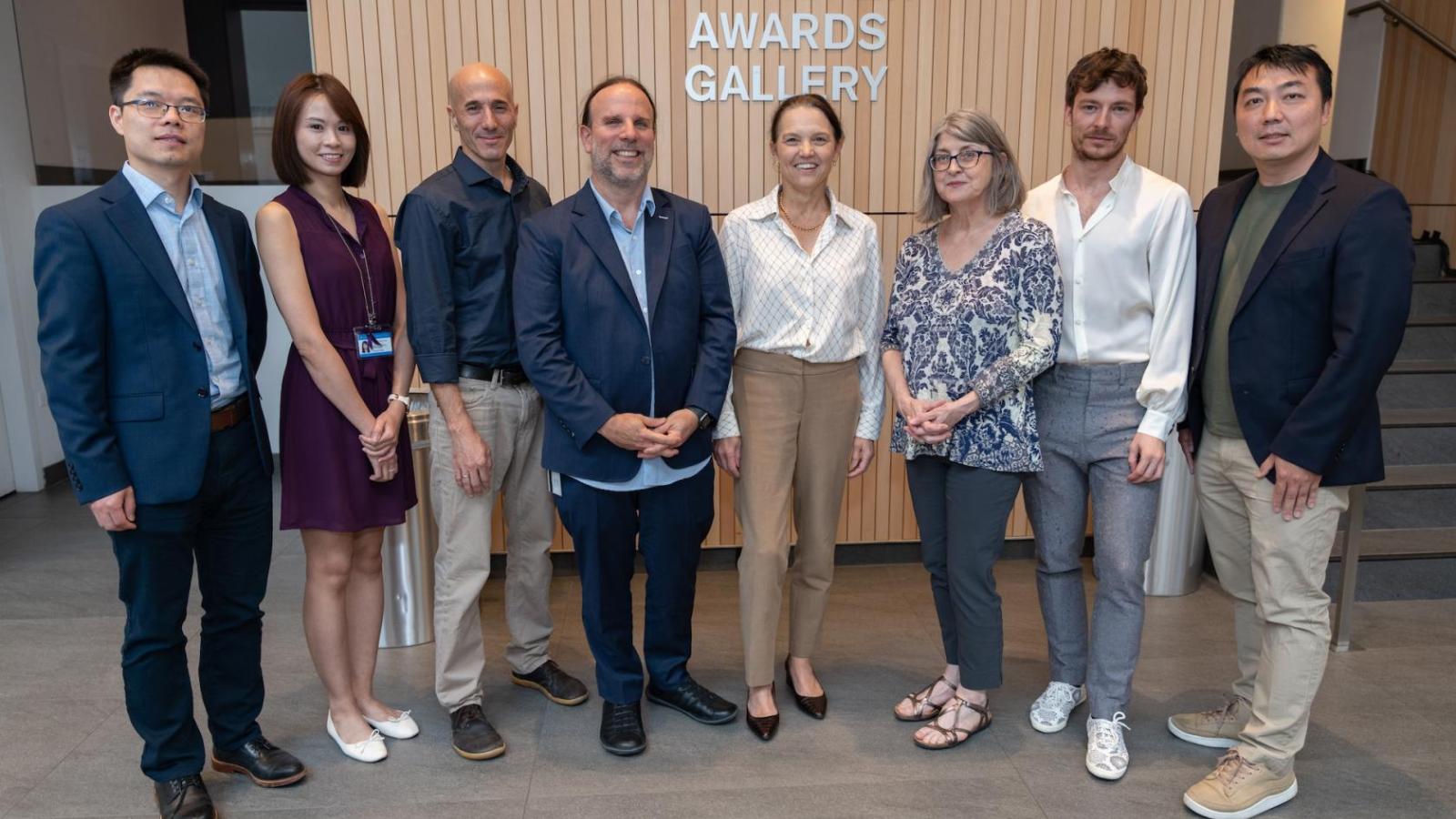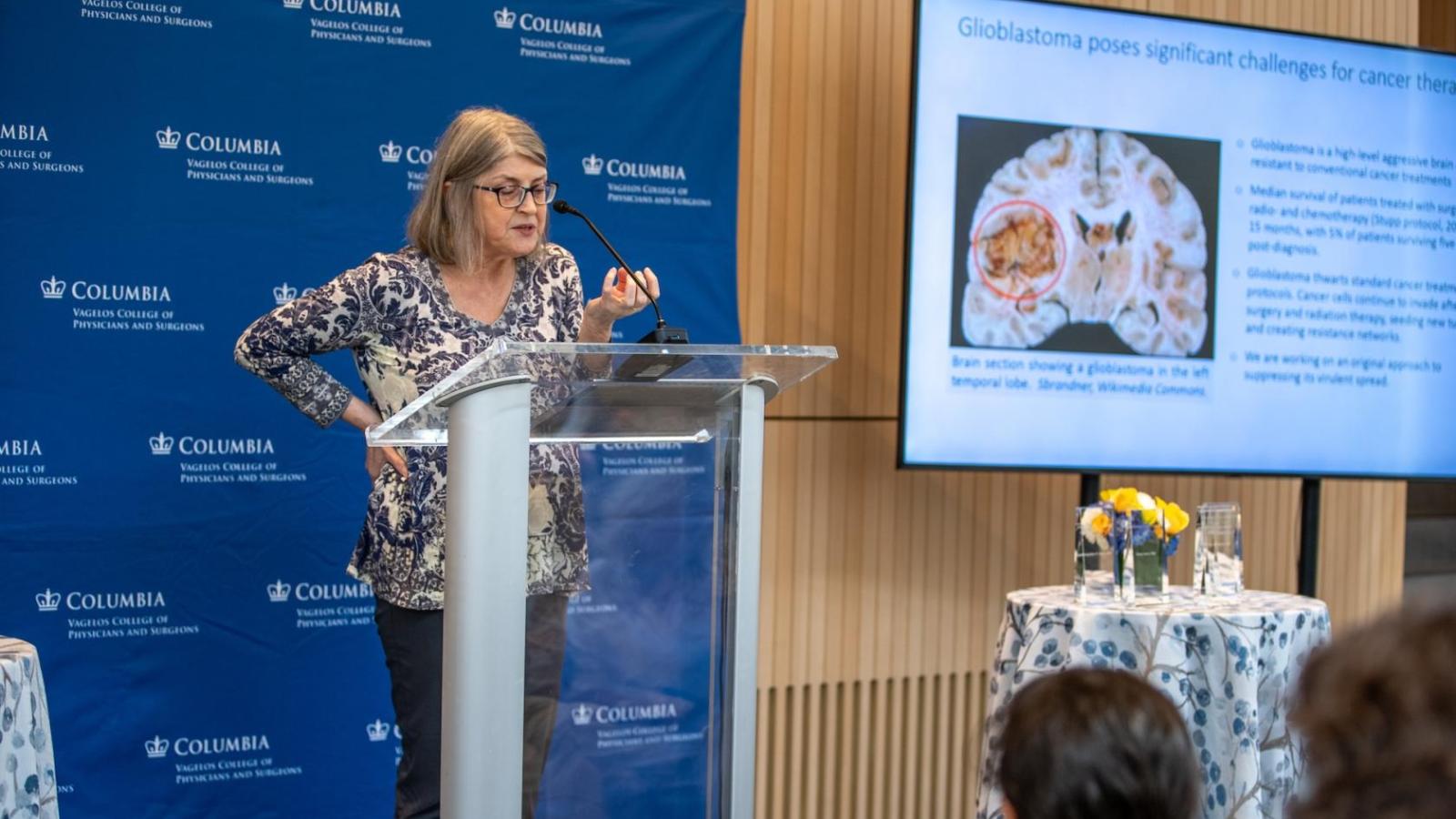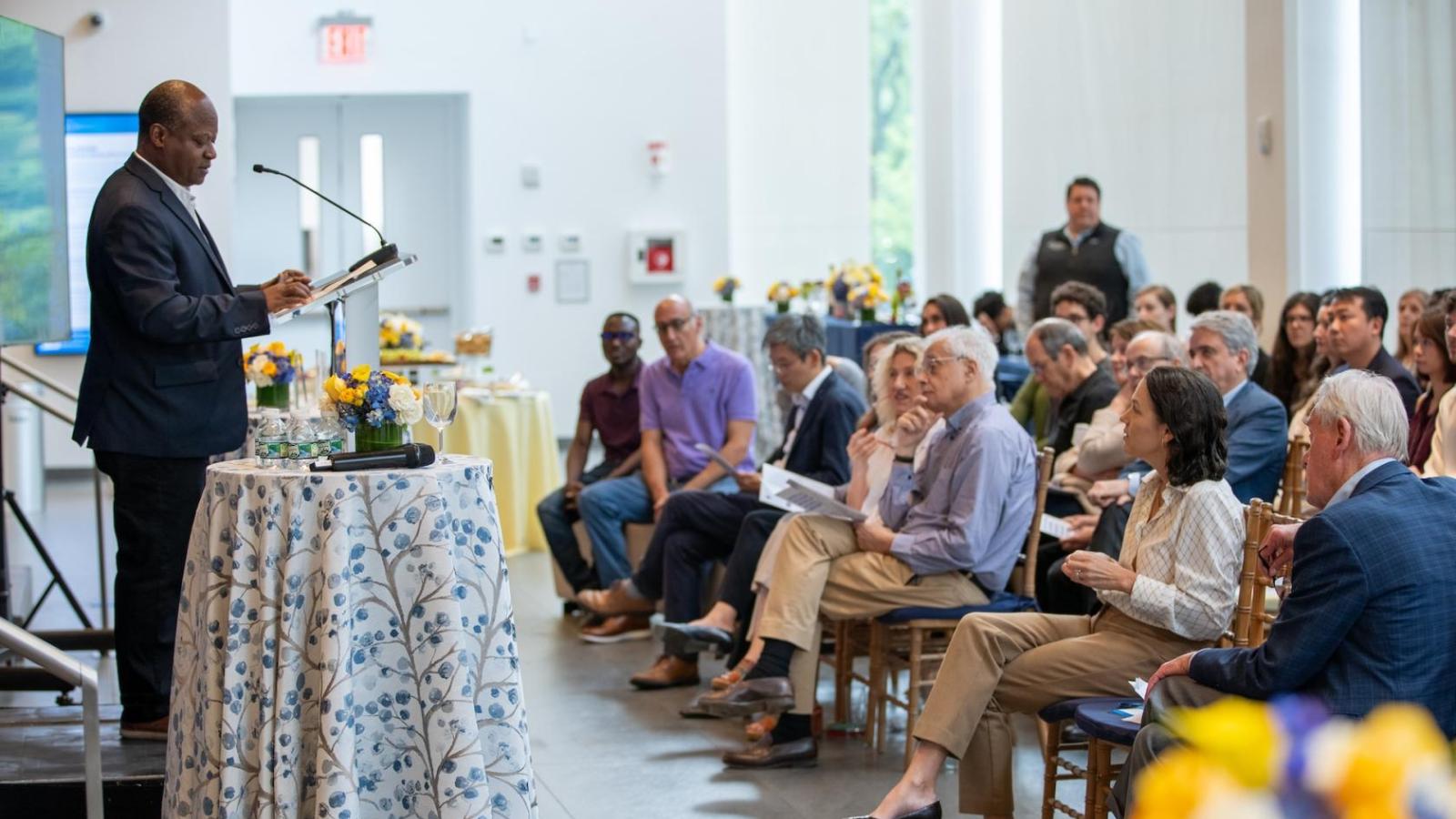
Physiological Questions, Inventive Approaches
Four VP&S scientists receive Schaefer Research Scholar awards
Four scientists at Columbia University Vagelos College of Physicians and Surgeons have received awards from the Schaefer Research Scholars Program, made possible through a bequest from Dr. Ludwig Schaefer. Each award consists of a $50,000 cash prize and up to $200,000 in direct research support.
Two awardees are full-time VP&S faculty and two are visiting faculty who are collaborating with VP&S faculty:
- Iok In Christine Chio, assistant professor, Institute for Cancer Genetics, Columbia University Vagelos College of Physicians and Surgeons
- Xuebing Wu, assistant professor of medicine, Columbia University Vagelos College of Physicians and Surgeons.
- Stéphane Nedelec, group leader, Institut du Fer à Moulin, Inserm, Sorbonne Université (host: Hynek Wichterle, Pathology & Cell Biology)
- Ofer Yizhar, associate professor of neurobiology, Weizmann Institute of Science (host: Stavros Lomvardas, Biochemistry & Molecular Biophysics)
Since 2011, the annual Schaefer Scholar Awards have been given to research scientists who have distinguished themselves in the science of human physiology and whose current work is of outstanding merit with significant academic distinction.
Descriptions from the 2024 recipients:
Iok In Christine Chio
Project: “Methionine proteome reactivity in cancer induced cachexia”
In her Schaefer project, Chio will use unique tools she has created to illuminate the basic mechanisms of cachexia, which could lead to new therapies that transform cancer care.
Cachexia is a severe wasting syndrome that accelerates the loss of muscle throughout the body. Patients weakened by this syndrome often cannot withstand the rigors of cancer therapy and thus experience greater mortality.
Chio’s lab has already uncovered a clue to the origins of cachexia. Loss of fat tissue often precedes muscle loss in cachexia, and some studies suggest that preserving fat can preserve muscle. Chio has found that fat loss in patients with cachexia seems to stem from an increase in an enzyme in fat tissue called MSRA.
Chio’s Schaefer project will test her hypothesis that MSRA promotes cachexia by modulating the methionine oxidation states of specific proteins in fat tissue. These proteins may serve as therapeutic targets or biomarkers of cachexia.
A unique and innovative chemoproteomic platform developed by Chio makes these new studies possible by allowing her to measure the oxidation states of individual methionine residues across the proteome.
Xuebing Wu
Project: “Noncoding translation surveillance in tumor immunogenicity and immunotherapy”
Wu’s Schaefer study could lead to the development of new cancer vaccines or therapies that improve the effectiveness of immunotherapies.
Immunotherapies are transforming cancer treatment but are ineffective for pancreatic cancer and many other tumors that are adept at hiding from the immune system.
The immune system can easily spot cancers covered with antigens that contain tumor-specific mutations. Tumors with fewer mutations, like pancreatic cancer, can more easily evade detection.
Recent studies have found that tumors can also be covered with “dark” antigens, which do not contain tumor-specific mutations but are generated by aberrant translation of noncoding sequences in cancer cells. Dark antigens, when present in large quantities, can trigger an attack from the immune system. Wu has found clues that cancers that evade the immune system might be suppressing the production of these dark antigens.
Wu will test the hypothesis that pancreatic cancer cells suppress the production of dark antigens by downregulating the BAG6 pathway, a process recently discovered in Wu’s lab, that partially degrades noncoding products and processes them into antigens. If so, he will then determine if increasing BAG6 expression will sensitize tumor cells to immunotherapies.
Stéphane Nedelec
Project: “Human motor neuron diversity and its implications for the etiology of amyotrophic lateral sclerosis”
With support from the Schaefer award, Nedelec will work with Hynek Wichterle’s lab to create improved human in vitro models of amyotrophic lateral sclerosis that should provide new insights into the disorder.
ALS is a late-onset disease that stems from the degeneration of muscle-innervating motor neurons, yet not all motor neurons exhibit the same vulnerability. Little is known about the mechanisms that underlie the differential resistance of adult neurons to ALS, in part due to limitations of existing models of the disease.
The researchers will test the capabilities of a groundbreaking organoid model recently developed in Nedelec’s lab. The 3D cellular system mimics several aspects of human trunk development, including the co-development of spine, spinal cord, muscle cells, and multiple subtypes of motor neurons corresponding to different locomotor circuits.
With the expertise of the Wichterle lab in analyzing motor neurons’ transcriptional programs and studying ALS physiopathology, they will determine if this new type of organoid is a better tool to model the maturation of neuromuscular circuits than current in vitro models of isolated motor neurons. If so, Nedelec will generate organoids from ALS patient-derived and control stem cells to better understand why motor neurons differ in their vulnerability to ALS. Ultimately, his project may open new therapeutic avenues for increasing motor neuron resistance to mutations causing the disease.
Ofer Yizhar
Project: “A light-driven system for studying neuropeptide signaling using hybrid Opto-GPCRs”
Oxytocin—a neuropeptide popularly known as the “love hormone”—promotes parenting behaviors and is essential in shaping social behavior throughout an animal’s life.
Understanding the role of oxytocin in behavior requires molecular tools that can precisely manipulate oxytocin activity within animals, but current methods are either too slow or too broad.
Yizhar’s group recently developed a system that could be used to control circuits activated by the oxytocin receptor and other similar G-protein coupled receptors. The optogenetics system, called OptoGPCRs, deploys rhodopsins that occur naturally in various organisms into mammalian neurons, where they function like inhibitory GPCRs and can be controlled with light.
At Columbia, Yizhar will modify a naturally occurring OptoGPCR to match the profile of brain-resident neuropeptide receptors and validate the system in vitro. Yizhar will then collaborate with the Jones-Marlin, Kahn, and Abdus-Saboor labs at the Zuckerman Institute to assess the ability of this light-driven system to alter behavior, including the reactions of female mice to the sounds of their pups and social huddling among pups. Because the system is highly sensitive to light, OptoGPCRs can be activated non-invasively with overhead light and could become an important tool to study the physiological basis of neuropeptides in early-life social behaviors.






